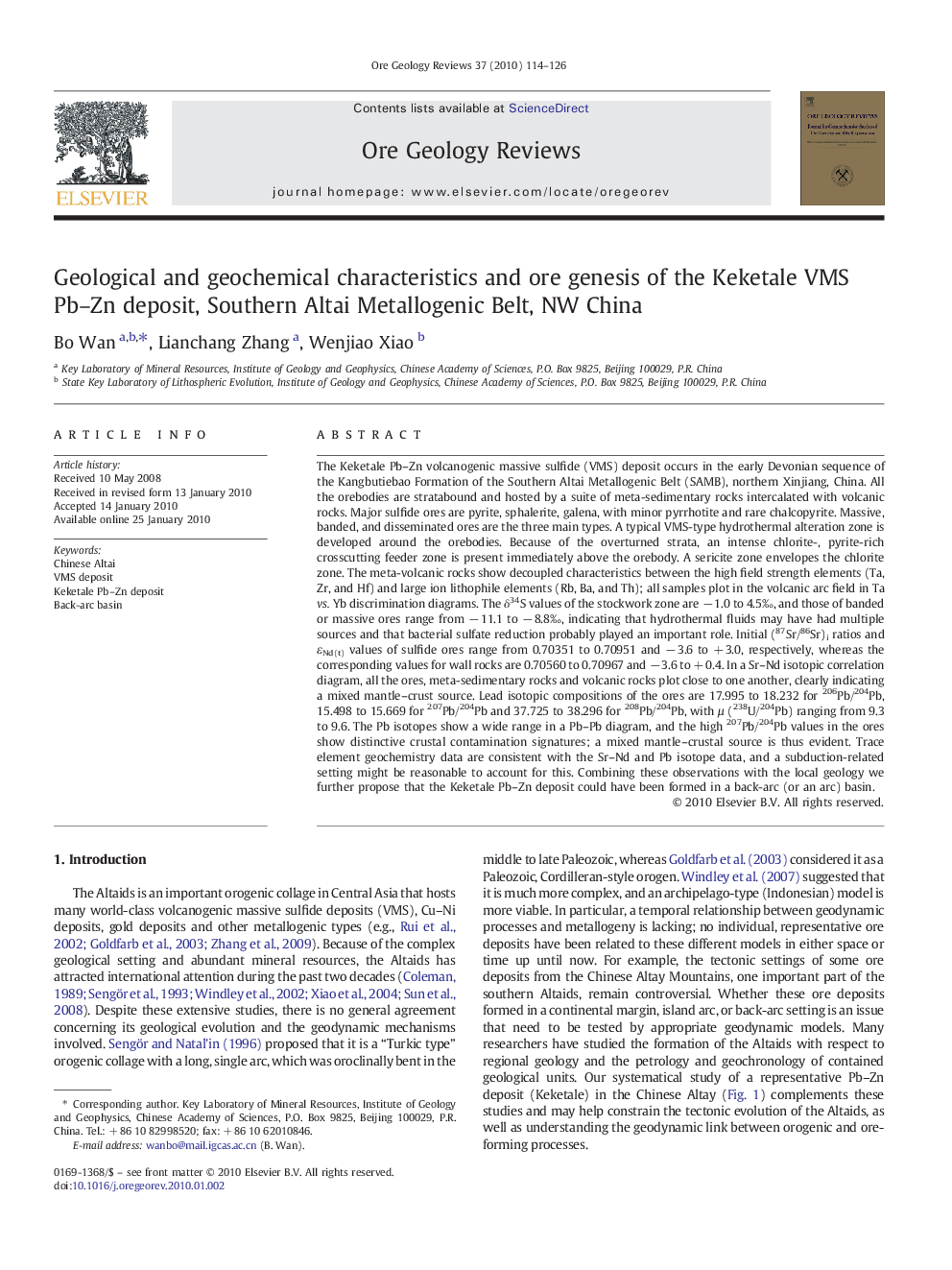| کد مقاله | کد نشریه | سال انتشار | مقاله انگلیسی | نسخه تمام متن |
|---|---|---|---|---|
| 4697855 | 1351908 | 2010 | 13 صفحه PDF | دانلود رایگان |

The Keketale Pb–Zn volcanogenic massive sulfide (VMS) deposit occurs in the early Devonian sequence of the Kangbutiebao Formation of the Southern Altai Metallogenic Belt (SAMB), northern Xinjiang, China. All the orebodies are stratabound and hosted by a suite of meta-sedimentary rocks intercalated with volcanic rocks. Major sulfide ores are pyrite, sphalerite, galena, with minor pyrrhotite and rare chalcopyrite. Massive, banded, and disseminated ores are the three main types. A typical VMS-type hydrothermal alteration zone is developed around the orebodies. Because of the overturned strata, an intense chlorite-, pyrite-rich crosscutting feeder zone is present immediately above the orebody. A sericite zone envelopes the chlorite zone. The meta-volcanic rocks show decoupled characteristics between the high field strength elements (Ta, Zr, and Hf) and large ion lithophile elements (Rb, Ba, and Th); all samples plot in the volcanic arc field in Ta vs. Yb discrimination diagrams. The δ34S values of the stockwork zone are − 1.0 to 4.5‰, and those of banded or massive ores range from − 11.1 to − 8.8‰, indicating that hydrothermal fluids may have had multiple sources and that bacterial sulfate reduction probably played an important role. Initial (87Sr/86Sr)i ratios and εNd(t) values of sulfide ores range from 0.70351 to 0.70951 and − 3.6 to + 3.0, respectively, whereas the corresponding values for wall rocks are 0.70560 to 0.70967 and − 3.6 to + 0.4. In a Sr–Nd isotopic correlation diagram, all the ores, meta-sedimentary rocks and volcanic rocks plot close to one another, clearly indicating a mixed mantle–crust source. Lead isotopic compositions of the ores are 17.995 to 18.232 for 206Pb/204Pb, 15.498 to 15.669 for 207Pb/204Pb and 37.725 to 38.296 for 208Pb/204Pb, with µ (238U/204Pb) ranging from 9.3 to 9.6. The Pb isotopes show a wide range in a Pb–Pb diagram, and the high 207Pb/204Pb values in the ores show distinctive crustal contamination signatures; a mixed mantle–crustal source is thus evident. Trace element geochemistry data are consistent with the Sr–Nd and Pb isotope data, and a subduction-related setting might be reasonable to account for this. Combining these observations with the local geology we further propose that the Keketale Pb–Zn deposit could have been formed in a back-arc (or an arc) basin.
Journal: Ore Geology Reviews - Volume 37, Issue 2, April 2010, Pages 114–126